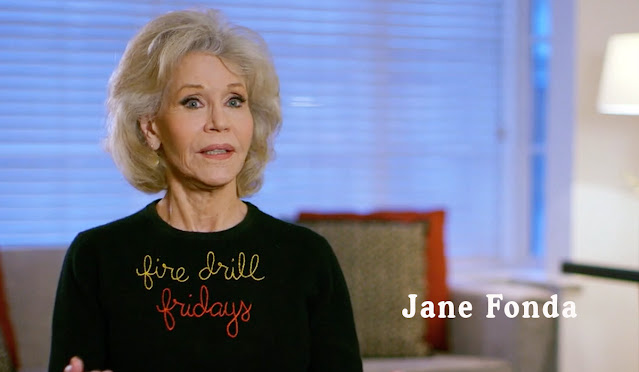 |
| Credit: Philippe Le Tellier/Paris Match via Getty Images |
Paul Newman and Joanne Woodward are the subjects of a new documentary streaming later this year on HBO Max. Told in six chapters, The Last Movie Stars chronicles Newman and Woodward's acting careers, including the sixteen films they made together, and their enduring love story. I had the privilege of attending the world premiere of the first chapter at this year's SXSW Film Festival and am thrilled to share a bit about this documentary with you.
The Last Movie Stars is the brainchild of producer Emily Wachtel who was close friends with the Newman-Woodward family and was able to get access to recordings, photos and home videos used in the film. Ethan Hawke directed the film and gave the project an "actors on actors" perspective.
The project began just as the pandemic put us all in isolation. The film embraces the constraints of the pandemic and is primarily composed of archival footage, movie clips, narration and Zoom interviews. This works quite well in the first chapter and I'm curious to see if continues to work or if it will bog down the rest of the film.
To offer some background, some years ago Paul Newman started working on a memoir. He invited friends and family to tell their stories about their relationships with him including his wife Joanne Woodward, his ex-wife Jackie Witte, his friends and fellow collaborators Gore Vidal, Karl Malden, Sidney Lumet, Elia Kazan and more. He also recorded himself discussing different aspects of his life and career. It's uncertain why but Newman eventually destroyed all of these recordings. Lucky for us, they were all transcribed and those transcriptions survived.
In The Last Movie Stars, Ethan Hawke invites his actor friends to read the transcriptions in the voices of the various subjects. George Clooney plays Paul Newman, Laura Linney plays Joanne Woodward, Zoe Kazan plays Jackie Witte, Vincent D'Onofrio plays Gore Vidal, etc. Other actors include Mark Ruffalo, Billy Crudup, Sam Rockwell, Oscar Isaac and Steve Zahn. Along with their narrations, there are Zoom interviews with all of the actors. They share their mutual admiration for Newman and Woodward with Hawke who guides the story. There are also of other interviews with figures like Sally Field and Martin Scorsese who don't narrate but offer their perspectives and stories. It's a very meta approach. The audience follows along with the creation of the documentary as they learn more about these two fascinating subjects from film history.
The documentary's core purpose which is to tell the story of Paul Newman and Joanne Woodward. Chapter one focuses on how they became actors, their affair which lead to the break-up of Newman's first marriage and the beginning of their lifelong adventure together. One takeaway from the first chapter is that Woodward very much came into her own at the beginning of her career while it took Newman to really discover himself as an actor. Newman eventually overshadowed Woodward as his fame skyrocketed. However, the two had a mutual respect for each other and Woodward was able to find a deeper meaning to her life and career. With The Last Movie Stars, producer Emily Wachtel and director Ethan Hawke are reintroducing Newman and Woodward to a new generation with the hope that telling their story will help reinforce their legacy as the great actors they were.
Watching The Last Movie Stars reinvigorated me. My purpose has always been to keep film history alive and share the joys of classic movies with others. This documentary does just that. Having seen the first chapter, I am anxious to see the next five. At the world premiere, Hawke shared that the first three chapters are completed but the last three are still in the editing process. He estimated that they'll be done by June. A streaming date has yet to be announced.
 |
| Paramount Theatre in Austin, Texas |
 |
| Ethan Hawke introducing The Last Movie Stars at SXSW |
 |
| Q&A after the world premiere. Left to Right: Richard Linklater, Emily Wachtel, Ethan Hawke |
I hope to do a full review once all six chapters of the documentary are available.
Note to add: While Joanne Woodward is still with us, she suffers from alzheimer's disease and was not able to be interviewed for this project.




















































